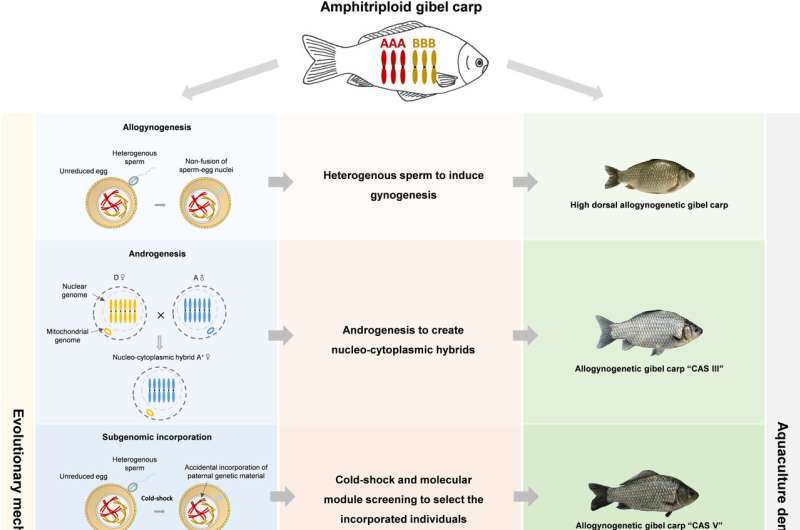This article has been reviewed according to Science X's editorial process and policies. Editors have highlighted the following attributes while ensuring the content's credibility:
fact-checked
proofread
Chinese wisdom and modern innovation of aquaculture

Aquaculture has been a traditional and vibrant farming practice in China for 8,000 years. In the 21st century, the success of Chinese aquaculture and its contributions to global food security have attracted extensive attention around the world. Aquaculture not only supplies a third of all animal protein foods in China, but also accounts for about 60% of the world's aquaculture production.
Today, aquaculture is considered one of the most efficient food-producing industries, and has become the fastest growing agriculture sector in the world, especially in regions with minimal aquaculture development.
In a study published in Water Biology and Security, Professor Jian-Fang Gui summarized Chinese aquaculture history and traditional and modern aquaculture industry.
In this work, Gui introduced several significant modern innovations related to genetic breeding and the seed industry of aquaculture, and reviewed modern innovations and contributions in other aspects of aquaculture, especially for freshwater fish aquaculture.
Furthermore, he also proposed 10 paradigm changes and future directions in sustainable aquaculture, which exposed a blueprint for global aquaculture development:
- More emphasis on genetically improved varieties and good native stock species to reduce dependence on general wild species and alien species
- Developing controllable fertility biotechnology to breed sterile aquaculture varieties to avoid genetic pollution/dilution of wild stocks and disease spread by escaped aquaculture varieties
- Optimizing polyculture and multi-trophic aquaculture to enhance yield and quality
- Activating rice-field aquaculture, the globally important agricultural heritage systems, to develop eco-agriculture, which would not only produce more rice and aquatic food, but also revitalize rural beauty
- Exploiting recirculating water facilities and intelligence techniques to develop smart aquaculture and eco-engineered aquaculture, which will have the ability to solve labor inequities in current aquaculture, especially for women
- Utilizing filter-feeding fishes for purifying water quality to develop eco-fisheries in large water bodies of lakes and reservoirs
- Prohibiting fertilizer use to maintain chemical-free aquaculture and clear water environments
- Introducing stringent nutrient and feed standards to improve aquatic product quality consistency
- Strictly controlling tailwater discharge to avoid eutrophication of natural waters and toxic cyanobacteria blooms, thereby improving environmental health
- Justifying aquaculture space needs to ensure balance of aquatic product outputs
With the continuous growth of aquaculture production, Chinese scientists and government leaders are closely monitoring the ecological health of water environments and aquatic resources. This new study represents a noteworthy contribution of Chinese wisdom to global ecological conservation efforts.
More information: Jian-Fang Gui, Chinese wisdom and modern innovation of aquaculture, Water Biology and Security (2024). DOI: 10.1016/j.watbs.2024.100271
Provided by KeAi Communications Co.





















